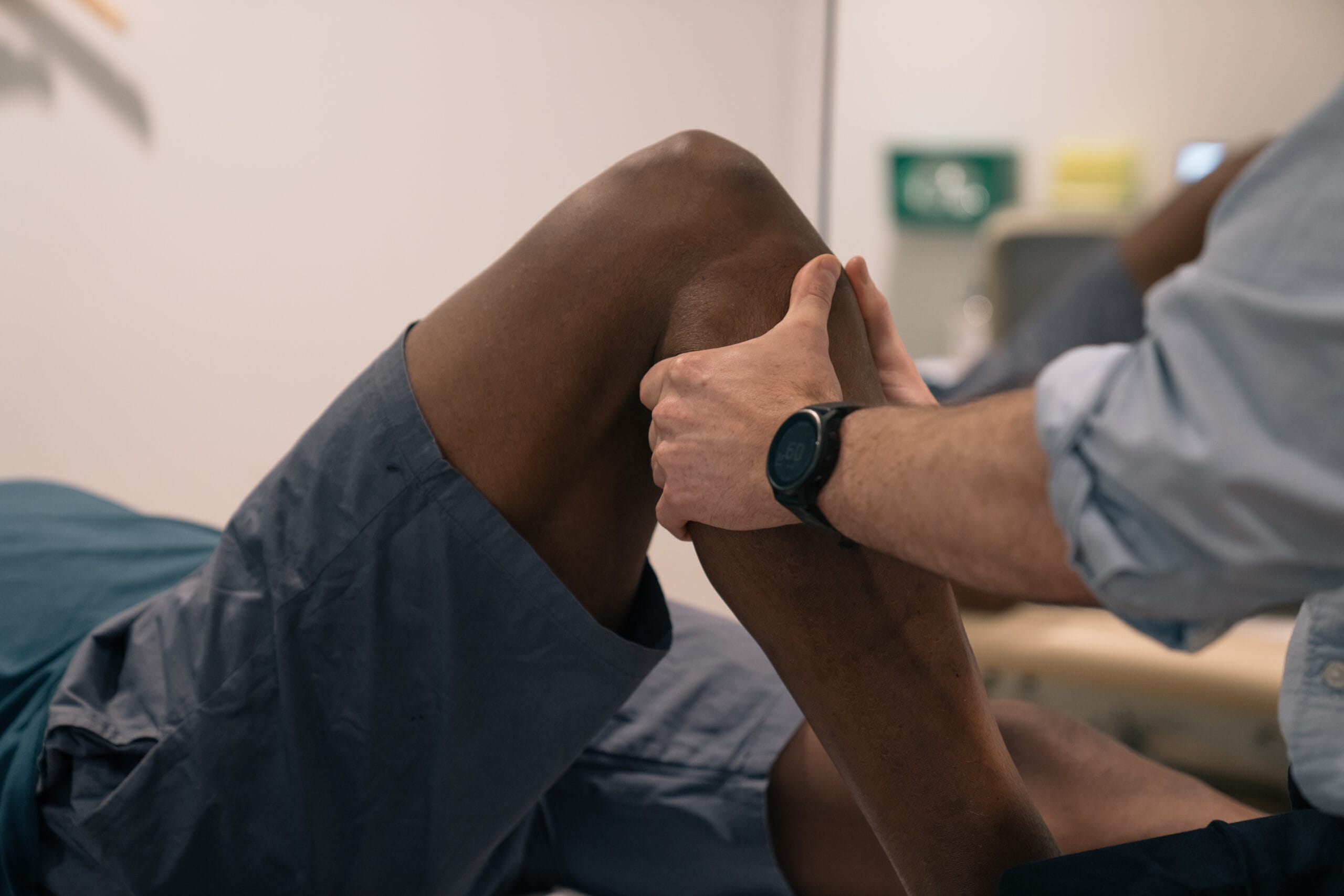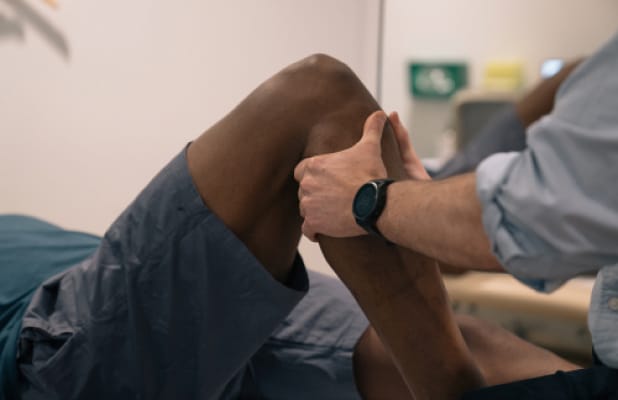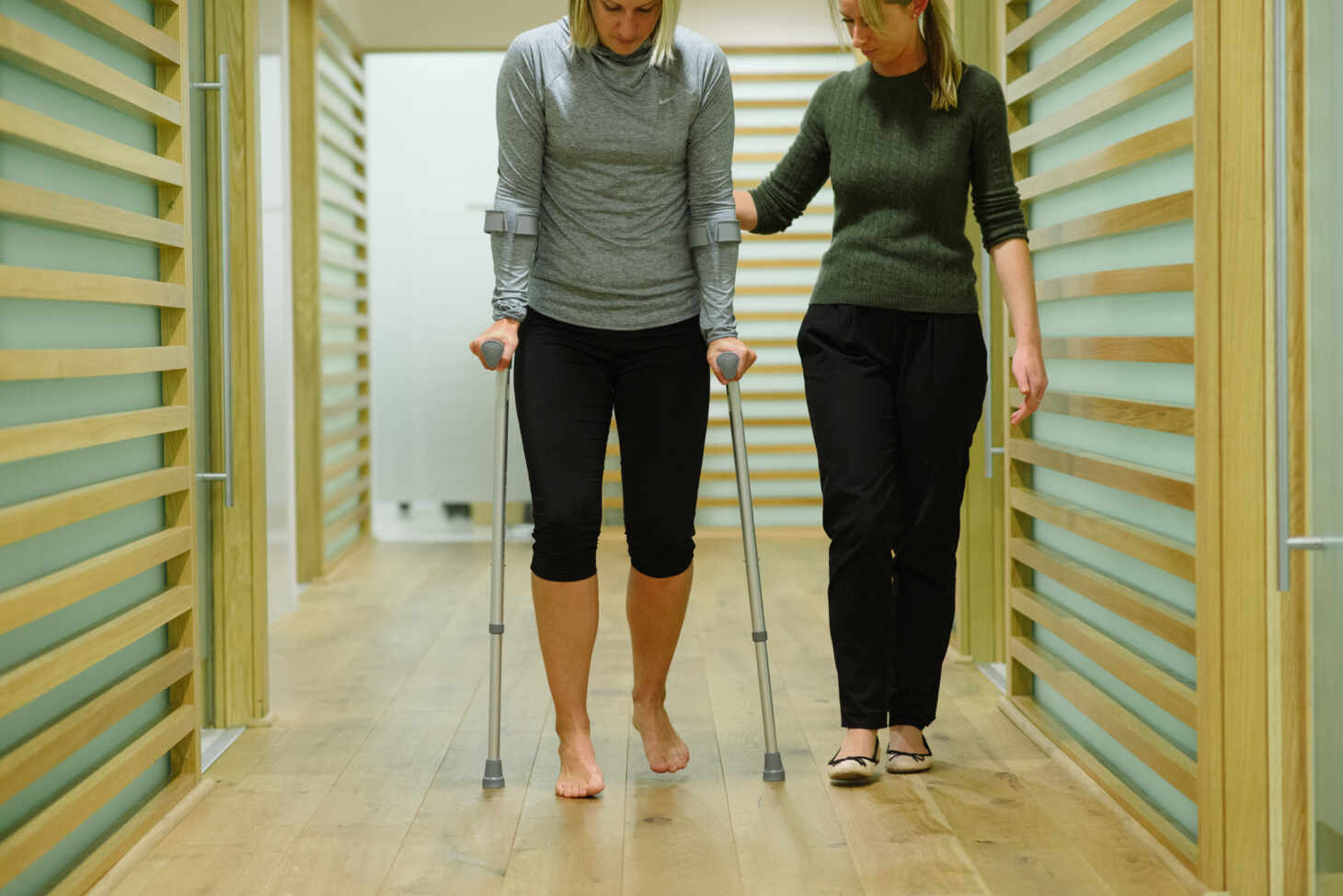Knee Cap Pain: Everything You Need to Know

Pure Sports Medicine
- 7 June, 2016
- Lower Limb
- orthopaedic
- knee pain
- Pain Management
- 5 min read
Knee Cap Pain: Everything You Need to Know

“I’ve started running a bit more recently and have felt pain behind my knee cap.”
“My knee pain has got worse as I am sitting for longer without moving.”
“I enjoy HIIT classes but I’ve developed some pain when I am doing the higher impact exercises, like jump squats.”
Any of those sound familiar? If so, you’re not alone. The changes in our routines over the past few years brought a number of challenges. Between our virtual clinic and face to face consultations, the stories behind individuals’ developing pain at the front of their knee varies.
Even before Covid-19, pain around or behind the knee cap was common. It represented 6% of all patients who walked through our doors, and is by far and away the most common knee pain complaint we treat. We know a great deal about the problem; we know that a number of culprits (drivers) can be responsible for its onset and persistence and we know that a good number of treatments that are effective in helping to reduce pain and improve function. We don’t, unfortunately, have all the answers, but this blog post will take you through what we know can drive symptom development and what interventions are proven to be effective. We will also touch on where we are developing new scientific knowledge as part of the research team at Pure Sports Medicine and from our academic base at Queen Mary University London.

How do you know if you have knee cap pain?
Knee cap pain – or Patellofemoral pain – starts gradually, and is normally felt during or shortly after an activity that increases the load going through the front of the knee, like running, squatting, jumping or walking up stairs. It is generally described as an aching pain, but with occasional sharp twinges. You may experience a small swelling of the knee. Symptoms are fairly well localised to the front of the knee (around or behind the knee cap) but are often not isolated to one specific area.
What are the causes of knee cap pain?
Clinical experience and the scientific evidence indicate that symptoms are driven by factors that exist with 4 broad domains. For some the way their knee is built (their structure) can contribute to the development of symptoms, although the evidence suggests that this is true for only a small number of individuals.
For others, the way in which they move, on top of how they are built (their biomechanics) contributes; with weakness in hip and thigh muscles (in adults) and stronger hip muscles (adolescents) having been shown to increase their risk of developing symptoms. Patterns of movement, where the knee moves inwards relative to the foot, have also been shown to be associated with knee cap pain.
The amount of activity (the individuals training/exercising frequency, intensity and volume) also appears to be a consistent catalyst for symptom development, with individuals often reporting to have done “too much too soon” compared to what they were doing before symptoms developed.
Finally, because we are human and pain is an experience of our body and brain, factors such as mood, sleep, stress and hormones can amplify the signals that are coming from the knee.
The above factors are usually interlinked but vary in order of relevance from individual to individual. The skill of the clinician is to take the time and use their expertise to understand which is the most relevant to you. When the important factors (clinically these would be referred to as deficits) have been identified, the development of an individualised management plan can begin
How is knee cap pain treated?
An effective treatment plan comes from a clear understanding of what needs to be targeted. Exercise, either in general (e.g. cycling) or specifically targeting muscles that have been assessed to be weak, form a central component of most management plans. Strong scientific evidence tells us exercise interventions can have a positive impact on an individual’s pain and function, but they are not appropriate for everyone.
Movement retraining, altering patterns of movement while negotiating stairs or running, has been shown to positively improve function and reduce pain, and so may be another approach the therapist prescribes.
Adjusting the amount of activity (Load management) is often critical to help reduce pain and provide a platform from where to build activity levels again. Your clinician will help you understand how much and what type(s) of activity can be undertaken whilst keeping you on track to making a full recovery.
Education around these concepts, and a broader understanding about the problem and its contributing factors, can also help you to manage your symptoms on a day to day basis, shown to be a component of an effective treatment programme.
Finally, there are treatment adjuncts. These are additional interventions which have very good evidence to support their use, having been shown to reduce pain, change muscle firing and movement patterns, and improve function. These include foot orthoses, taping and injections. These types of interventions are used only in the short-term (4-6 weeks) to provide some pain relief and allow you to start the rehabilitation process
What factors look to predict a poor outcome?
The most consistent finding from multiple studies is that a longer symptom duration predicts poor treatment outcomes. The earlier that treatment is sought, the sooner the problem can be understood and the individual put on the right path to achieving a resolution to their symptoms. Surprisingly, there has been no study that has identified cartilage damage (following knee scans) as a predictor of poor outcomes, indicating there is hope of making a good recovery irrespective of what your knee might look like on imaging.
What research are we doing to understand knee cap pain?
Both I, Dr Simon Lack, and my colleague, Dr Bradley Neal, have completed our PhD’s looking into knee cap pain and we continue to research in this area whilst also treating patients at Pure Sports Medicine. Over the last few years we have conducted studies both at PSM and at our academic institution (Queen Mary University London). These have included works understanding what people struggle to get back to doing after experiencing knee cap pain, for which running was the most common activity. This led Bradley to explore how effective specific cues were in changing runners’ movement patterns. We have also explored what treatment people had received for their knee cap pain, which led me to investigate how specific exercise has an effect on the muscles of the hip, trying to better target exercise to individuals needs rather than using a one size fits all approach. Right now we are completing a comprehensive study developing a ‘Best Practice Guide’ to managing knee cap pain. This is involving looking at all studies that have tested treatment approaches, interviewing clinicians who treat knee cap pain and patients who have experienced knee cap pain. If you would like to take part, please read the flyer below and register your interest, it would be great to hear what your experience has been.
If you are experiencing knee cap pain and would like to speak with one of our expert Physiotherapists, please complete the form below.

Advice
Over the last 20+ years our experts have helped more than 100,000 patients, but we don’t stop there. We also like to share our knowledge and insight to help people lead healthier lives, and here you will find our extensive library of advice on a variety of topics to help you do the same.
OUR ADVICE HUBS See all Advice Hubs
